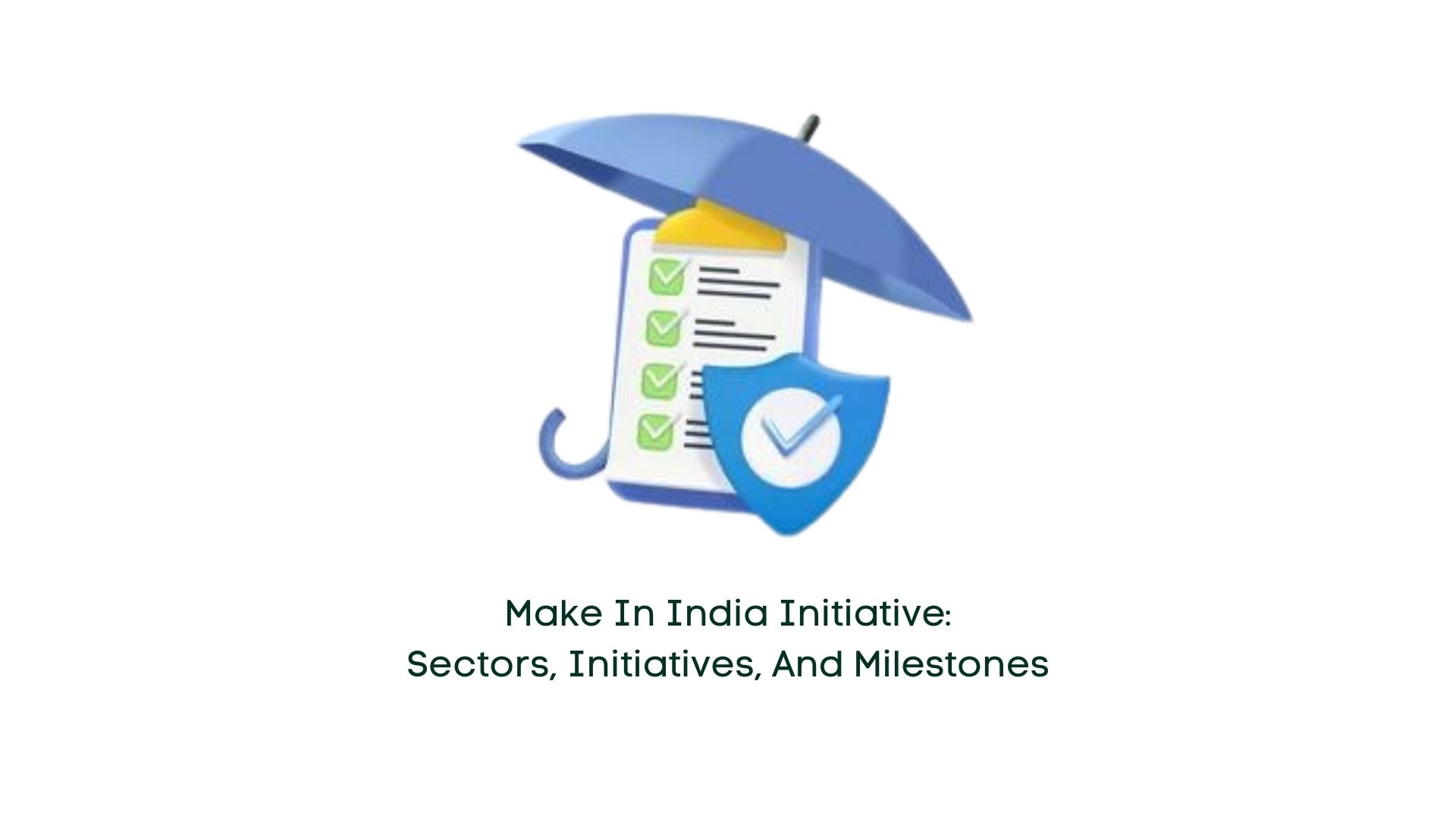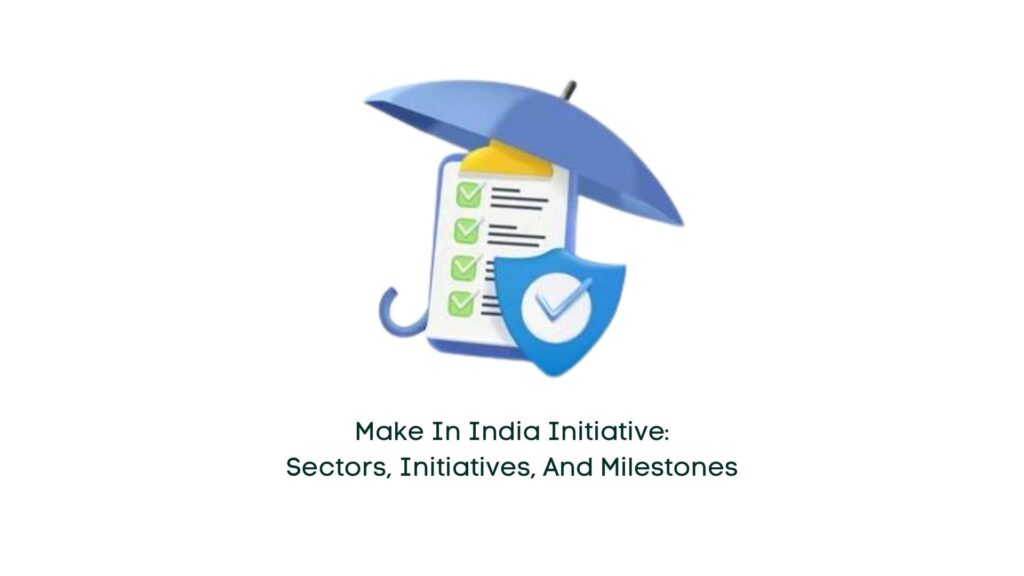
02 Mar Make In India Initiative: Sectors, Initiatives, and Milestones

Embarked on September 25th, 2014, the Make in India initiative spearheaded by Prime Minister Narendra Modi aimed to invigorate domestic and international investment in India’s manufacturing sector. This comprehensive campaign encompasses a diverse array of sectors within the economy, showcasing significant strides towards progress:
Tax Reforms and Digitization: The implementation of Goods and Services Tax (GST) streamlined taxation processes, reducing production costs. Additionally, digitization initiatives have simplified business operations, fostering seamless online transactions and company establishment procedures.
Financial Inclusion and Investment: Schemes such as Jan Dhan Yojana and Prime Minister’s Jan Dhan Yojana have promoted financial inclusion among citizens. Liberalization of Foreign Direct Investment (FDI) regulations has spurred an influx of funds, propelling job creation and economic growth.
Infrastructure Development: Initiatives like Sagarmala and Bharatmala Pariyojana focus on enhancing connectivity to bolster business expansion across the nation. Moreover, projects like BharatNet have extended technology access to rural areas, facilitating digital service delivery.
Sector-Specific Progress: Under the Make in India scheme, various sectors have witnessed notable advancements:
- Automobile and Components: Key players have established manufacturing units, leading to significant growth in production, domestic sales, and exports.
- Aviation: Initiatives like UDAN and tax incentives have propelled growth in passenger traffic and cargo services.
- Biotechnology: The industry has flourished with the establishment of research centers and the launch of indigenous vaccines.
- Chemicals and Petrochemicals: Major projects like the Assam Gas Cracker have contributed to sectoral growth and employment generation.
- Construction: Infrastructure development projects, including smart cities and housing schemes, have spurred construction activity and employment.
- Defence: Privatization initiatives and FDI reforms have boosted domestic production and exports in the defence sector.
- Electrical Machinery: Incentives for capacity addition and FDI have driven growth, making India a net exporter of electricity.
- Electronic Systems: Policies like Modified SIPS and export incentives have catalyzed growth in mobile manufacturing and IT exports.
- Food Processing: Fiscal incentives and funding support have propelled growth in food processing industries and infrastructure.
- IT and BPM: Favorable policies and investments in digital infrastructure have fueled growth in the IT sector.
- Leather: De-licensing and grants have facilitated sectoral growth, making India a key player in leather production and exports.
- Media & Entertainment: Growth in FDI and infrastructure development initiatives have propelled the media and entertainment industry's expansion.
- Mining: Reforms like the MMDR Act have enhanced transparency and revenue generation in the mining sector.
- Oil and Gas: Policy reforms and infrastructure expansion have bolstered India's refining capacity and reduced dependency on imports.
- Pharmaceuticals: Policy reforms and investment in healthcare infrastructure have driven growth in pharmaceutical production and exports.
- Ports and Shipping: FDI inflows and infrastructure development projects have improved port efficiency and cargo handling capabilities.
- Railways: Modernization projects and public-private partnerships have enhanced passenger amenities and freight movement.
- Renewable Energy: Incentives and collaborations have accelerated the adoption of renewable energy sources, leading to significant capacity additions.
- Roads and Highways: Subsidies and funding support have facilitated the development of highways and expressways, improving connectivity and trade.
- Space: Launch vehicle advancements and international collaborations have cemented India's position as a global leader in space exploration.
- Textiles and Garments: Export incentives and policy support have fueled growth in textile production and exports.
- Thermal Power: Policy reforms and capacity expansion projects have strengthened India's position in thermal power generation.
- Tourism and Hospitality: Infrastructure development and promotional schemes have boosted tourism revenues and FDI inflows.
- Wellness: Policy support and international cooperation initiatives have driven growth in the AYUSH sector, creating employment opportunities.
India’s Make in India initiative continues to evolve, offering a conducive environment for investment and innovation across diverse sectors. With ongoing reforms and sector-specific initiatives, India strives to emerge as a global manufacturing hub, realizing its economic potential and fostering inclusive growth.


No Comments